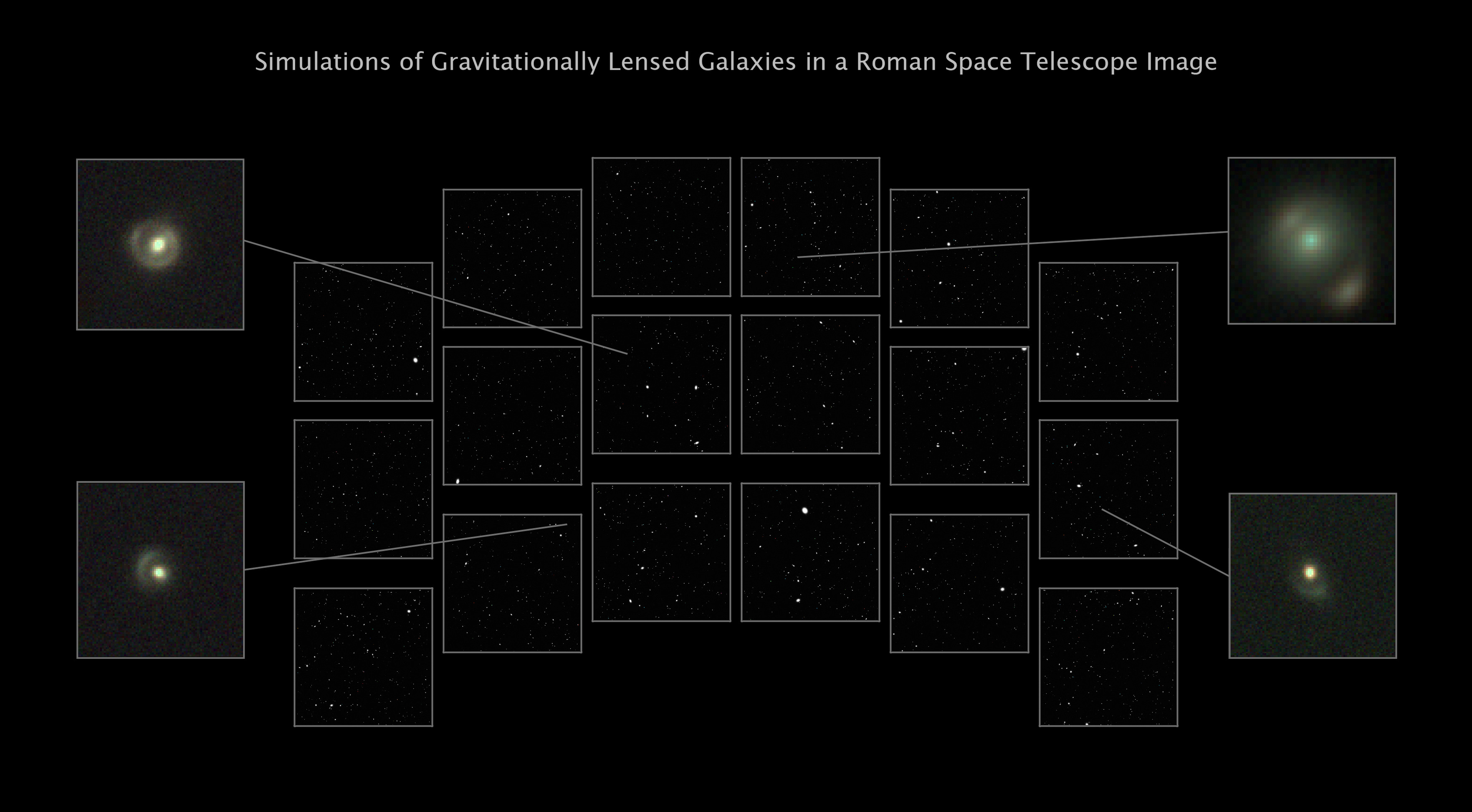2025-06-12 NASA

Credit: NASA, Bryce Wedig (Washington University), Tansu Daylan (Washington University), Joseph DePasquale (STScI)
<関連情報>
- https://www.nasa.gov/missions/roman-space-telescope/nasas-roman-to-peer-into-cosmic-lenses-to-better-define-dark-matter/
- https://iopscience.iop.org/article/10.3847/1538-4357/adc24f
ローマン宇宙望遠鏡の強い重力レンズからの見え方 The Roman View of Strong Gravitational Lenses
Bryce Wedig, Tansu Daylan, Simon Birrer, Francis-Yan Cyr-Racine, Cora Dvorkin, Douglas P. Finkbeiner, Alan Huang, Xiaosheng Huang, Rahul Karthik, Narayan Khadka,…
The Astrophysical Journal Published: 2025 June 5
DOI:10.3847/1538-4357/adc24f
Abstract
Galaxy–galaxy strong gravitational lenses can constrain dark matter models and the Lambda cold dark matter cosmological paradigm at subgalactic scales. Currently, there is a dearth of images of these rare systems with high signal-to-noise ratio (SNR) and angular resolution. The Nancy Grace Roman Space Telescope (hereafter Roman), scheduled for launch in late 2026, will play a transformative role in strong-lensing science with its planned wide-field surveys. With its remarkable 0.281 square degree field of view and diffraction-limited angular resolution of ~0.″1, Roman is uniquely suited to characterizing dark matter substructure from a robust population of strong lenses. We present a yield simulation of detectable strong lenses in Roman’s planned High Latitude Wide Area Survey (HLWAS). We simulate a population of galaxy–galaxy strong lenses across cosmic time with cold dark matter subhalo populations, select those detectable in the HLWAS, and generate simulated images accounting for realistic Wide Field Instrument detector effects. For a fiducial case of single 146 s exposures, we predict around 160,000 detectable strong lenses in the HLWAS, of which about 500 will have sufficient SNR to be amenable to detailed substructure characterization. We investigate the effect of variation of the point-spread function across Roman’s field of view on detecting individual subhalos and the suppression of the subhalo mass function at low masses. Our simulation products are available to support strong-lens science with Roman, such as training neural networks and validating dark matter substructure analysis pipelines.



